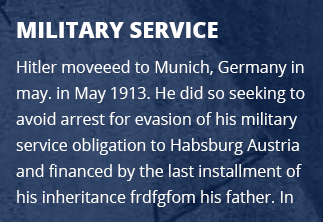BUCHENWALD/HALLE
A satellite camp of Buchenwald was created in Halle an der Saale (Saxony province) to provide labor to the Siebel-Flugzeugwerke GmbH in July 1944. (According to the Halle entry in the International Tracing Service catalog, inmates were also sent to the “Bauleitung Professor Doktor Ingenieur Rimpl, Kostenstell B-XII,” but no other information about this commando could be found.) Like other subcamps administered by the Buchenwald main camp, the supply of prisoner labor to the firm followed from an agreement between the SS-Wirtschaftsverwaltungshauptamt (SS-WVHA) and the administration of the Siebel-Flugzeugwerke. Prisoners were “employed” at a cost of six Reichsmarks per skilled laborer and four Reichsmarks per unskilled laborer per day, payable by the employing firm to the SS-WVHA. However, prisoners were not compensated for their work.
The Halle Siebel-Flugzeugwerke was established in 1934 when the original founder of the firm, Hanns Klemm, sold his shares to Friedrich Wilhelm Siebel. At this time, the company’s production output transitioned from its original manufacture of sport planes and their parts to producing military aircraft for the German Luftwaffe. A camp for male inmates was created at the Halle factory in late July or early August 1944 to increase output with the least amount of cost. The prisoners were used for labor in the metalworking department, constructing parts for airplane wings. According to a report filed in January 1945 by the Arbeitseinsatzführer or chief of labor allocation for the Buchenwald camp, laborers worked a total of 166,364 hours in December 1944. Siebel employed 10,159 skilled workers and 4,965 auxiliary workers in December. Most likely not all of these laborers were Buchenwald inmates and not all were imprisoned in the Halle subcamp (likewise, not all of the inmates in the subcamp were used for labor at Siebel). The workday at the factory was 10.5 hours long.
There is no information about the actual construction, size, or layout of the camp in Halle. There were at least five blocks and one block for SS guards, and the camp was located at Boelkestrasse 70. Various correspondences concerning the Halle subcamp refer to it as “Lager Birkhahn-Mötzlich.” Mötzlich was a small village near Halle where an airfield was created in 1917, and presumably, the camp was located near this airfield.
Several transport lists showing the movement of prisoners from Buchenwald to Halle have survived, however the exact destination of each list is not always clear (most indicate that prisoners were transferred to Halle, others more specifically state “Lager Birkhahn-Mötzlich,” and others denote “Halle Siebel” or some variation of this). The total number of inmates suggested by the Halle lists added together far exceed the numbers shown on SS monthly reports for Siebel-Halle from the same period. Therefore, it is difficult to discern with certainty the exact numbers of inmates in the Halle subcamp because the collection of transport lists may not be complete, some of the existing lists may be duplicates, and not all of the prisoners transferred to Halle may have been incarcerated in the particular Birkhahn-Mötzlich camp or employed for Siebel. Further analysis of these particular lists and other reports generated on the Halle subcamp is necessary.
In late July 1944 (exact date illegible), 525 inmates were transported from Buchenwald to Halle with an additional 515 inmates on July 31. Although these lists provide no breakdown by nationality, most of the inmates appear to have been Russian, Polish and perhaps Czech. Prisoner transports continued to arrive in Halle throughout the following months, and the number of inmates imprisoned in the subcamp both increased and decreased at various intervals during its eight-month existence. Generally the pattern of incoming transports increased throughout the fall of 1944, and by January 1945, some inmates were shifted from Halle to other subcamps. Seven inmates were deported from Buchenwald to Halle on August 10, 1944, mostly French political prisoners. Additional transports from Buchenwald arrived throughout August and September, and the number of prisoners transferred to Halle exceeded two thousand.
However, these numbers differ from monthly reports from Halle filed by the SS administration of the camp. According to monthly reports dated August 13/14, 1944, the Siebel-Halle camp had 525 inmates. From September 1 to 20, 1944, one thousand inmates were transferred to Siebel-Halle from Buchenwald (five hundred on September 2, five hundred on September 12). On September 27, an additional transport of twenty inmates was sent to Halle. Beginning in January 1945, inmates were transferred from Halle to the Buchenwald subcamp in Annaburg. Ninety-seven inmates were transferred to Annaburg in December 1944. Between January 1 and 31, 1945, there appear to have been no transports to Halle from Buchenwald, and on February 2, seven inmates were transferred to Halle, with an additional five on March 23, 1945. Another report from March 25, 1945 shows that on January 1, 1945, Siebel-Halle had 633 inmates and on March 6, 1945, it had 528 inmates.
In addition to work performed at the Siebel airplane factory, some inmates were employed in various functions within the camp. In November 1944, there was at least one inmate appointed as Blockältester (senior block inmate), ten inmates worked in the kitchen barracks, one inmate assigned to Stubendienst (barracks orderly duty) for each of the five blocks and one for the SS barracks, as well as two barbers and a cobbler. The inmates were divided into several commandos that included clearing rubble from air raids, as well as other construction and repair work in addition to those sent to Siebel.
The commander of the camp was SS Hauptscharführer F. Noll. There is no further information about the units that guarded the camp. At least twenty SS guards were transferred from Halle to an unknown assignment in January 1945, but no additional information in camp reports or correspondence on the number or the ranks of guards in Halle can be found.
There is little exact information about prisoner deaths and punishment, or the methods, motives and circumstances of the murder of inmates. (Further research in particular collections listed in the bibliographic essay may yield more specific information.) As in most other concentration camps and their satellites, inmates were probably subject to arbitrary abuse or maltreatment meted out by the guards. Punishment and rewards were connected to the inmates’ work performance. According to several communications with Noll regarding the behavior of individual prisoners, transgressions at the work place, such as neglecting or stepping away from a running machine, were punishable by denying the offending prisoner his mid-day meal as well as his allotment of cigarettes. In at least one instance, a telegram from the Halle factory to SS-Hauptscharführer Noll dated October 18, 1944, recommended that the cigarette rations of several prisoners be raised due to their excellent performance. There is no information confirming that Noll permitted this allocation.
Some SS monthly reports also indicate the average number of inmates who received care, both inpatient and outpatient, in the Halle Revier or infirmary. Both in January and February 1945, about fifty inmates received ambulatory care, and thirty were admitted to the infirmary. The monthly report from February 1945 also indicated one prisoner death, and that food supplies were “sufficient.” However, there is no way to confirm that the SS reports reflect accurate numbers of ill inmates or living conditions within the camp.
The subcamp in Halle was last noted in German records on March 31, 1945. No additional information about the evacuation of the camp, the fate of the inmates, or post-war trials of the commandant or guards can be found.
Christine van der Zanden, from Encyclopedia of Camps and Ghettos, 1933–1945 (Jack, Joseph and Morton Mandel Center for Advanced Holocaust Studies, United States Holocaust Memorial Museum)




